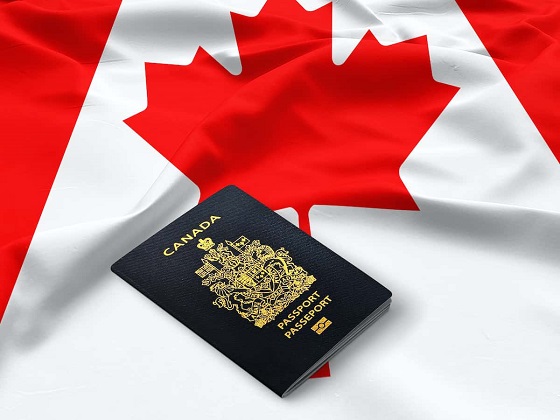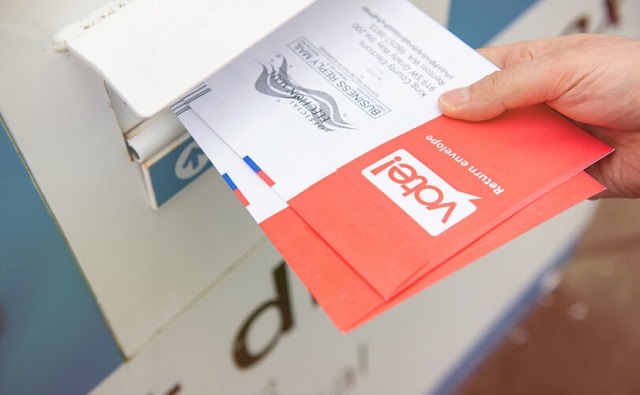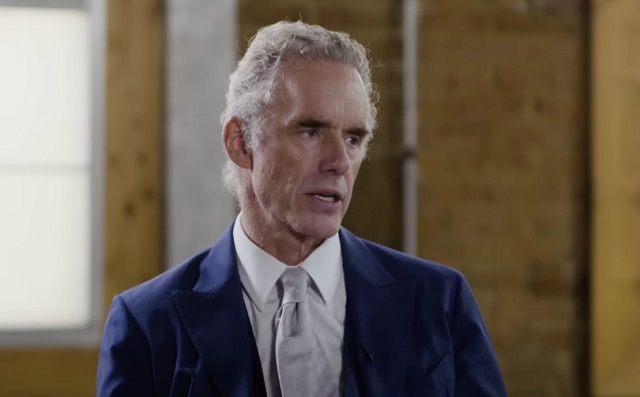Fraser Institute
Ottawa touts wait lists for dysfunctional child-care program

From the Fraser Institute
By Matthew Lau
Ahead of its April 16 budget release, the Trudeau government effectively admitted its national child-care program, which it began implementing in 2021, has created widespread shortages. “We’re seeing wait lists increase across the country,” said Jenna Sudds, federal minister in charge of child care.
The government has tried to cast the shortages as the result of skyrocketing demand for a popular federal program. But when government makes billions of dollars in subsidies available, of course there will be massive demand among people wanting to get their hands on the cash. That doesn’t mean the program is a success; it means the government is wrecking a market by throwing supply and demand out of whack.
Vancouver has a shortfall of about 15,000 child-care spaces for children up to age 12. In Niagara Region, the wait list for toddlers and preschoolers has expanded by 227 per cent in just the past two years. Clearly, the child-care sector has been thrown into disorder.
But if shortages illustrate a government program’s benefits, then the average 44-week wait time to get orthopedic surgery in Canada is evidence of the success of government health care. Our health-care system must be great—look how many people are lining up for it!
To try to mitigate the shortages, the Trudeau government announced $1 billion in low-interest loans and $60 million in non-repayable grants to expand and renovate child-care spaces. Additional money will be spent in the form of student loan forgiveness and training for workers in the sector. Both the shortages and new spending confirm what skeptics of national government daycare predicted from the outset—the original budget of $30 billion over five years, then $9.2 billion annually after that, underestimated what taxpayers would eventually shell out.
The new spending also exacerbates two government-created problems in child care. The first is that the $1 billion in loans and $60 million in grants are available only to public and non-profit providers. So excluded from the program are parents who want to take care of children at home, children who are cared for by grandparents or other relatives, and private for-profit providers. Instead of getting child-care help, they’ll foot the tax bill to pay for the government-preferred forms of child care.
The discrimination against private for-profit providers is a clear problem with the existing federal child-care strategy. “Frankly, Canada’s national daycare system excludes many more Canadians than it includes,” Cardus researcher Andrea Mrozek wrote last year. In Nova Scotia, where the federal government wants to move “to a fully not-for-profit and publicly managed system,” even provincial Liberal Leader Zach Churchill has lamented the exclusion of the private sector.
The second problem made worse is the spending is done increasingly through different streams and programs, diverting money towards administrative and bureaucratic bloat instead of actual child care. Based on a municipal memo back in 2022, it’s already estimated Peel Region in Ontario needs 40 additional bureaucrats to deal with child care. In British Columbia, the City of Cranbrook recently issued a 26-page request for proposals for consultants to prepare grant applications to the provincial government for child-care funds.
The ever-increasing government budget for child care, apparently, is great for the government sector and consultants hired to help move government money around. It’s a disaster, however, for parents who cannot find child care and taxpayers who pay billions for shortages—a reality unchanged by the Trudeau government’s latest announcement.
Author:
Fraser Institute
Federal government’s fiscal record—one for the history books

From the Fraser Institute
By Jake Fuss and Grady Munro
Per-person federal spending is expected to equal $11,901 this year. To put this into perspective, this is significantly more than Ottawa spent during the global financial crisis in 2008 or either world war.
The Trudeau government tabled its 2024 budget earlier this month and the contents of the fiscal plan laid bare the alarming state of federal finances. Both spending and debt per person are at or near record highs and prospects for the future don’t appear any brighter.
In the budget, the Trudeau government outlined plans for federal finances over the next five years. Annual program spending (total spending minus debt interest costs) will reach a projected $483. billion in 2024/25, $498.7 billion in 2025/26, and continue growing in the years following. By 2028/29 the government plans to spend $542.0 billion on programs—an 18.4 per cent increase from current levels.
This is not a new or surprising development for federal finances. Since taking office in 2015, the Trudeau government has shown a proclivity to spend at nearly every turn. Prime Minister Trudeau has already recorded the five highest levels of federal program spending per person (adjusted for inflation) in Canadian history from 2018 to 2022. Projections for spending in the 2024 budget assert the prime minister is now on track to have the eight highest years of per-person spending on record by the end of the 2025/26 fiscal year.
Per-person federal spending is expected to equal $11,901 this year. To put this into perspective, this is significantly more than Ottawa spent during the global financial crisis in 2008 or either world war. It’s also about 28.0 per cent higher than the full final year of Stephen Harper’s time as prime minister, meaning the size of the federal government has expanded by more than one quarter in a decade.
The government has chosen to borrow substantial sums of money to fund a lot of this marked growth in spending. Federal debt under the Trudeau government has risen before, during and after COVID regardless of whether the economy is performing relatively well or comparatively poor. Between 2015 and 2024, Ottawa is expected to run 10 consecutive deficits, with total gross debt set to reach $2.1 trillion within the next 12 months.
The scale of recent debt accumulation is eye-popping even after accounting for a growing population and the relatively high inflation of the past two years. By the end of the current fiscal year, each Canadian will be burdened with $12,769 more in total federal debt (adjusted for inflation) than they were in 2014/15.
You can attribute some of this increase in borrowing to the effects of COVID, but debt had already grown by $2,954 per person from 2014 to 2019—before the pandemic. Moreover, budget estimates show gross debt per person (adjusted for inflation) is expected to rise by more than $2,500 by 2028/29.
As with spending, the Trudeau government is on track to record the six highest years of federal debt per-person (adjusted for inflation) in Canadian history between 2020/21 and the end of its term next autumn. Why should Canadians care about this record debt?
Simply put, rising debt leads to higher interest payments that current and future generations of taxpayers must pay—leaving less money for important priorities such as health care and social services. Moreover, all this spending and debt hasn’t helped improve living standards for Canadians. Canada’s GDP per person—a broad measure of incomes—was lower at the end of 2023 than it was nearly a decade ago in 2014.
The Trudeau government’s track record with federal finances is one for the history books. Ottawa’s spending continues to be at near-record levels and Canadians have never been burdened with more debt. Those aren’t the type of records we should strive to achieve.
Authors:
Business
Honda deal latest episode of corporate welfare in Ontario

From the Fraser Institute
By Jake Fuss and Tegan Hill
If Honda, Volkswagen and Stellantis are unwilling to build their EV battery plants in Ontario without corporate welfare, that sends a strong signal that those projects make little economic sense.
On Thursday, the Trudeau and Ford governments announced they will dole out an estimated $5 billion in corporate welfare to Honda so the auto giant can build an electric vehicle (EV) battery plant and manufacture EVs in Ontario. This is the third such deal in Ontario, following similar corporate welfare handouts to Volkswagen ($13.2 billion) and Stellantis ($15.0 billion). Like the previous two deals, the Honda deal comes at a significant cost to taxpayers and will almost certainly fail to create widespread economic benefits for Ontarians.
The Trudeau and Ford governments finalized the Honda deal after more than a year of negotiations, with both governments promising direct incentives and tax credits. Of course, this isn’t free money. Taxpayers in Ontario and the rest of Canada will pay for this corporate welfare through their taxes.
Unfortunately, corporate welfare is nothing new. Governments in Canada have a long history of picking their favoured firms or industries and using a wide range of subsidies and other incentives to benefit those firms or industries selected for preferential treatment.
According to a recent study, the federal government spent $84.6 billion (adjusted for inflation) on business subsidies from 2007 to 2019 (the last pre-COVID year). Over the same period, provincial and local governments spent another $302.9 billion on business subsidies for their favoured firms and industries. (Notably, the study excludes other forms of government support such as loan guarantees, direct investments and regulatory privileges, so the total cost of corporate welfare during this period is actually much higher.)
Of course, when announcing the Honda deal, the Trudeau and Ford governments attempted to sell this latest example of corporate welfare as a way to create jobs. In reality, however, there’s little to no empirical evidence that corporate welfare creates jobs (on net) or produces widespread economic benefits.
Instead, these governments are simply picking winners and losers, shifting jobs and investment away from other firms and industries and circumventing the preferences of consumers and investors. If Honda, Volkswagen and Stellantis are unwilling to build their EV battery plants in Ontario without corporate welfare, that sends a strong signal that those projects make little economic sense.
Unfortunately, the Trudeau and Ford governments believe they know better than investors and entrepreneurs, so they’re using taxpayer money to allocate scarce resources—including labour—to their favoured projects and industries. Again, corporate welfare actually hinders economic growth, which Ontario and Canada desperately need, and often fails to produce jobs that would not otherwise have been created, while also requiring financial support from taxpayers.
It’s only a matter of time before other automakers ask for similar handouts from Ontario and the federal government. Indeed, after Volkswagen secured billions in federal subsidies, Stellantis stopped construction of an EV battery plant in Windsor until it received similar subsidies from the Trudeau government. Call it copycat corporate welfare.
Government handouts to corporations do not pave the path to economic success in Canada. To help foster widespread prosperity, governments should help create an environment where all businesses can succeed, rather than picking winners and losers on the backs of taxpayers.
Authors:
-

 Automotive2 days ago
Automotive2 days agoThe EV ‘Bloodbath’ Arrives Early
-

 CBDC Central Bank Digital Currency1 day ago
CBDC Central Bank Digital Currency1 day agoA Fed-Controlled Digital Dollar Could Mean The End Of Freedom
-

 Business2 days ago
Business2 days agoHonda deal latest episode of corporate welfare in Ontario
-

 Frontier Centre for Public Policy23 hours ago
Frontier Centre for Public Policy23 hours agoHow much do today’s immigrants help Canada?
-

 espionage2 days ago
espionage2 days agoOne in five mail-in voters admitted to committing voter fraud during 2020 election: Rasmussen poll
-

 Brownstone Institute1 day ago
Brownstone Institute1 day agoThe Numbers Favour Our Side
-

 Alberta1 hour ago
Alberta1 hour agoRed Deer Company fined $360,000.00 after 2022 workplace fatality
-

 Fraser Institute2 hours ago
Fraser Institute2 hours agoFederal government’s fiscal record—one for the history books










